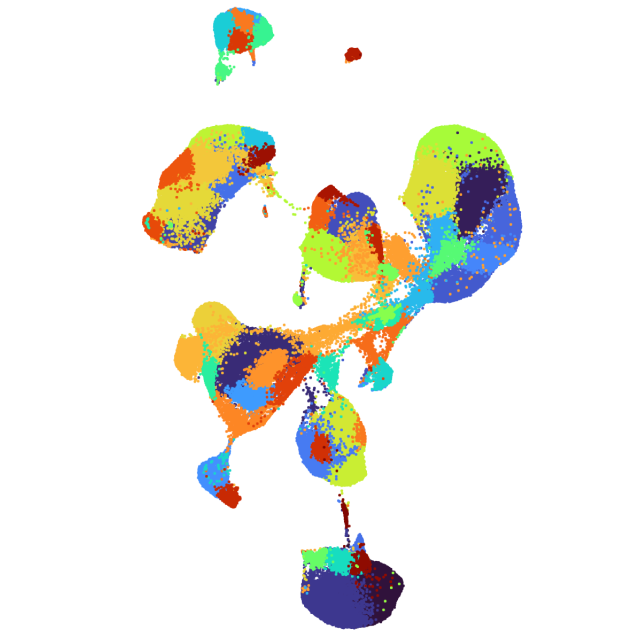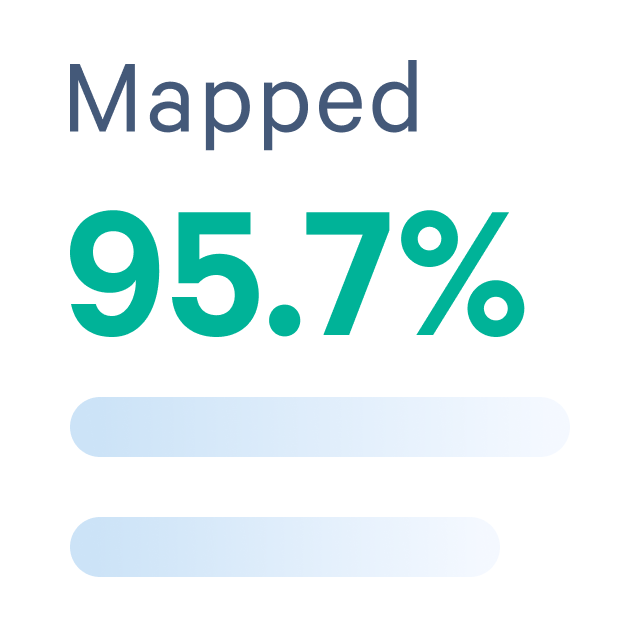Multiomic Integration Neuroscience Application Note: Single Cell Multiome RNA + ATAC Alzheimer's Disease Mouse Model Brain Coronal Sections from One Hemisphere Over a Time Course
Epi Multiome ATAC + Gene Expression dataset analyzed using Cell Ranger ARC 2.0.1

Learn about Chromium analysis
This dataset is part of the Single cell and spatial multiomics identified Alzheimer's disease markers Application Note.
Wild-type and CRND8 APP-overexpressing transgenic male mice brains were collected at 2.5, 5.7, 13.2, and 17.9 months of age. Each brain was separated into its hemispheres, where one was fresh frozen (FF) and the other formalin-fixed paraffin-embedded (FFPE).
For FF hemispheres, nuclei were isolated following the Demonstrated Protocol for Nuclei Isolation from Complex Tissues for Single Cell Multiome ATAC + Gene Expression Sequencing (CG000375 Rev B). Paired ATAC and Gene Expression libraries were prepared using the Chromium Next GEM Single Cell Multiome ATAC + Gene Expression User Guide (CG000338 Rev D). The resulting libraries were sequenced on Illumina NovaSeq as follows:
- 20,000 read pairs per cell for each Gene Expression and ATAC library
- 28 bp read 1 (Barcode and UMI), 10 bp i7 sample barcode, 10 bp i5 sample barcode, and 90 bp read 2 (Transcript) for Gene Expression
- 50 bp read 1 (DNA insert), 8 bp i7 sample barcode, 24 bp i5 (Barcode), and 49 bp read 2 (DNA insert) for ATAC
For FFPE hemispheres, 5 um sections were prepared using the Demonstrated Protocol for Visium Spatial Gene Expression for FFPE –Tissue Preparation Guide (CG000408 Rev B). The tissues were then deparaffinized, decrosslinked, and stained for immunofluorescence using the Demonstrate Protocol Visium Spatial Gene Expression for FFPE – Deparaffinization, Decrosslinking, Immunofluorescence Staining & Imaging (CG000410 Rev B). Three protein markers were immunostained at 1:100 dilutions, using the following antibodies:
Primary antibodies:
- GFAP: Abcam, catalog # ab53554
- NeuN: Abcam, catalog # ab207279
- Amyloid precursor protein (APP): BioLegend, catalog # 803004
Secondary antibodies:
- Invitrogen, catalog # A11078 (against GFAP, channel #2)
- Invitrogen, catalog # A32740 (against NeuN, channel #3)
- Invitrogen, catalog # A31571 (against APP, channel #4)
Imaging was performed on a Nikon Ti2 wide-field fluorescent microscope following the Visium Spatial Gene Expression for FFPE Imaging Guidelines (CG000436 Rev A). Spatial Gene Expression libraries were prepared using the Visium Spatial Gene Expression Reagent Kits for FFPE (CG000407 Rev C). The resulting libraries were sequenced on Illumina NovaSeq as follows:
- 25,000 read pairs per spot
- 28 bp read 1 (barcode and UMI), 10 bp i7 sample barcode, 10 bp i5 sample barcode, 90 bp read 2 (transcript) for Gene Expression. Note that only the first 50 bp of read 2 are used for transcript mapping.
The resulting sequencing data were processed and aggregated using Cell Ranger ARC 2.0.1 (using a custom mouse reference that includes the human amyloid precursor protein transcript) or Space Ranger 1.3.1.
This dataset is licensed under the Creative Commons Attribution 4.0 International (CC BY 4.0) license. 10x citation guidelines available here.
